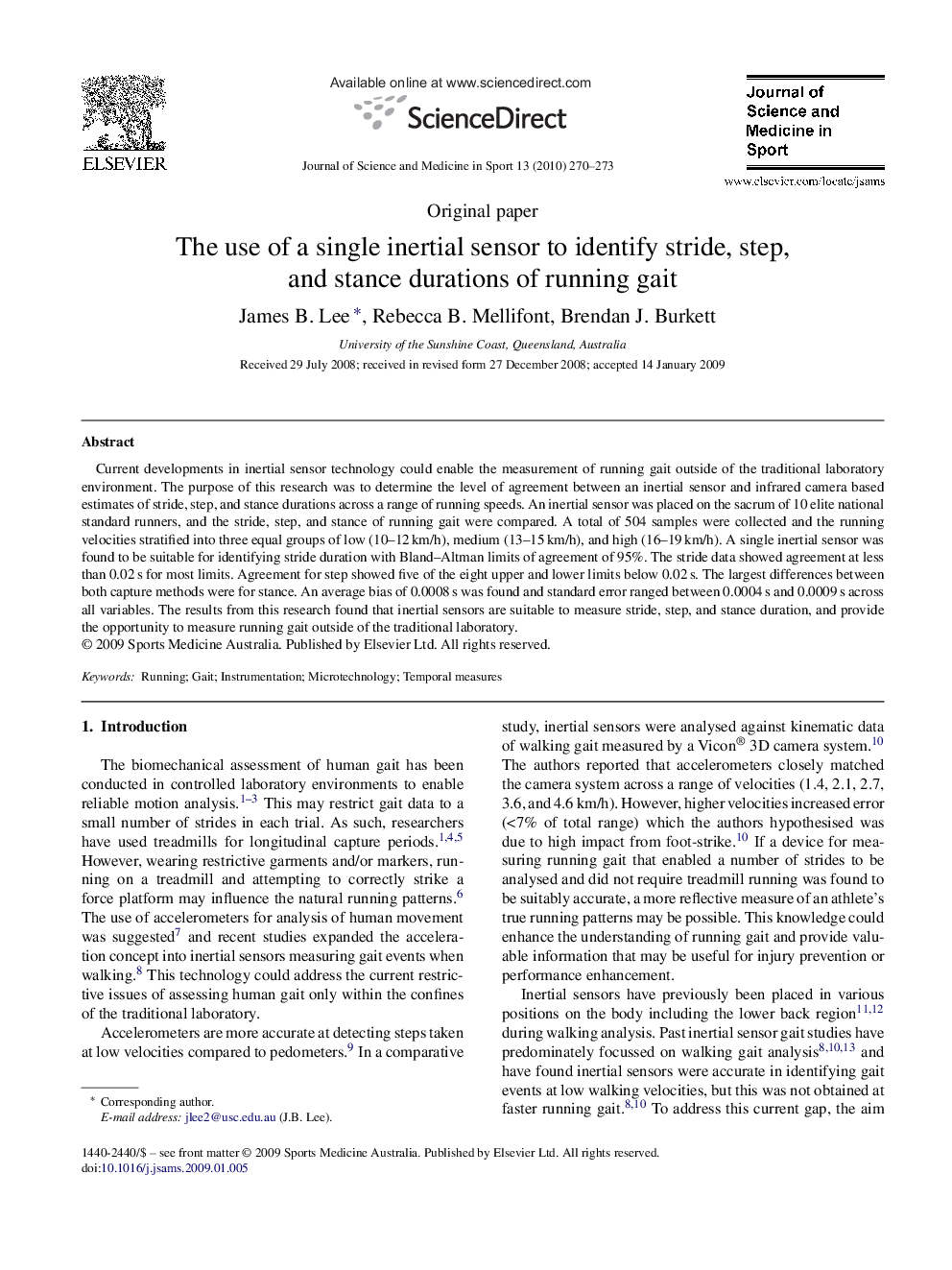| Article ID | Journal | Published Year | Pages | File Type |
|---|---|---|---|---|
| 2708330 | Journal of Science and Medicine in Sport | 2010 | 4 Pages |
Current developments in inertial sensor technology could enable the measurement of running gait outside of the traditional laboratory environment. The purpose of this research was to determine the level of agreement between an inertial sensor and infrared camera based estimates of stride, step, and stance durations across a range of running speeds. An inertial sensor was placed on the sacrum of 10 elite national standard runners, and the stride, step, and stance of running gait were compared. A total of 504 samples were collected and the running velocities stratified into three equal groups of low (10–12 km/h), medium (13–15 km/h), and high (16–19 km/h). A single inertial sensor was found to be suitable for identifying stride duration with Bland–Altman limits of agreement of 95%. The stride data showed agreement at less than 0.02 s for most limits. Agreement for step showed five of the eight upper and lower limits below 0.02 s. The largest differences between both capture methods were for stance. An average bias of 0.0008 s was found and standard error ranged between 0.0004 s and 0.0009 s across all variables. The results from this research found that inertial sensors are suitable to measure stride, step, and stance duration, and provide the opportunity to measure running gait outside of the traditional laboratory.
